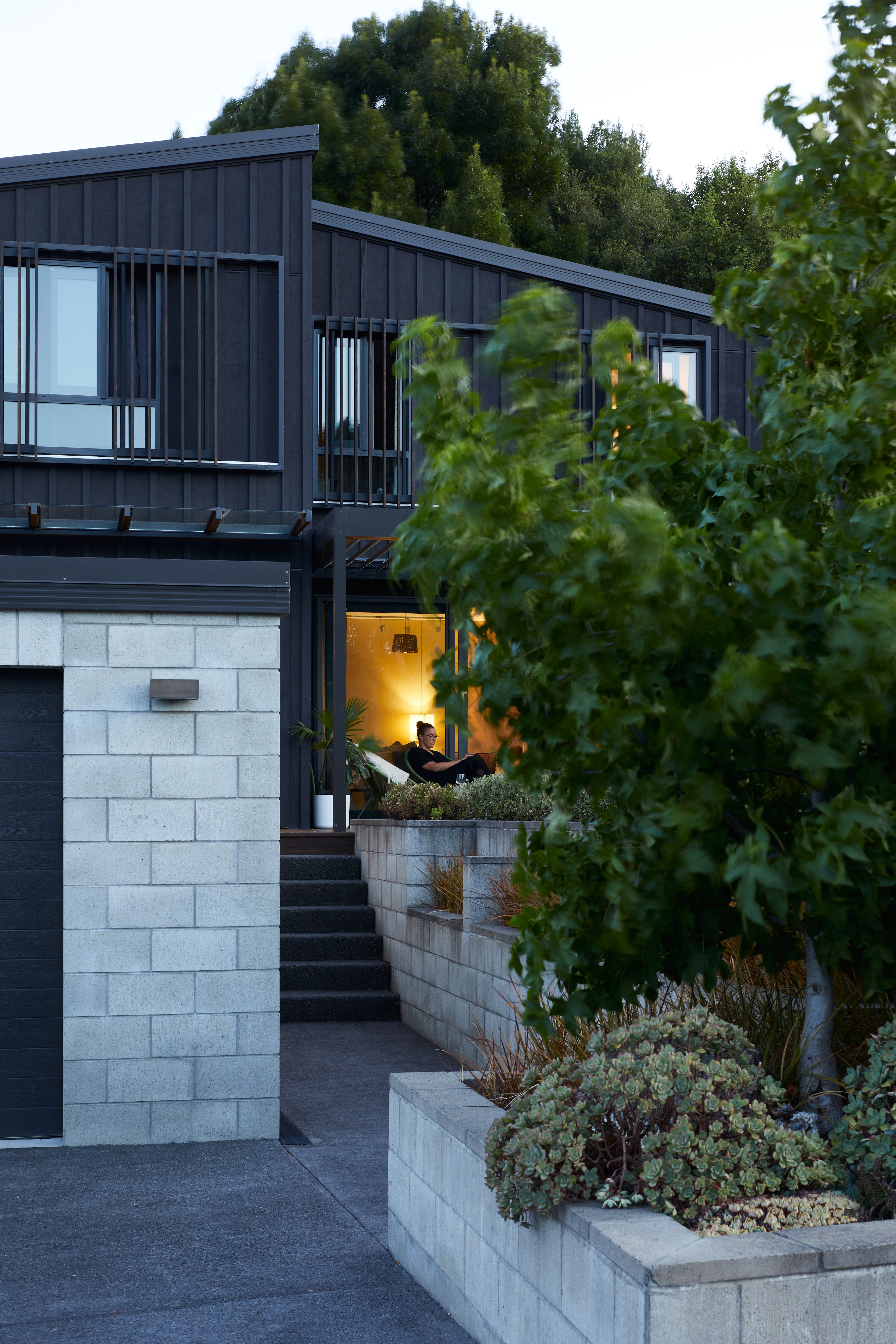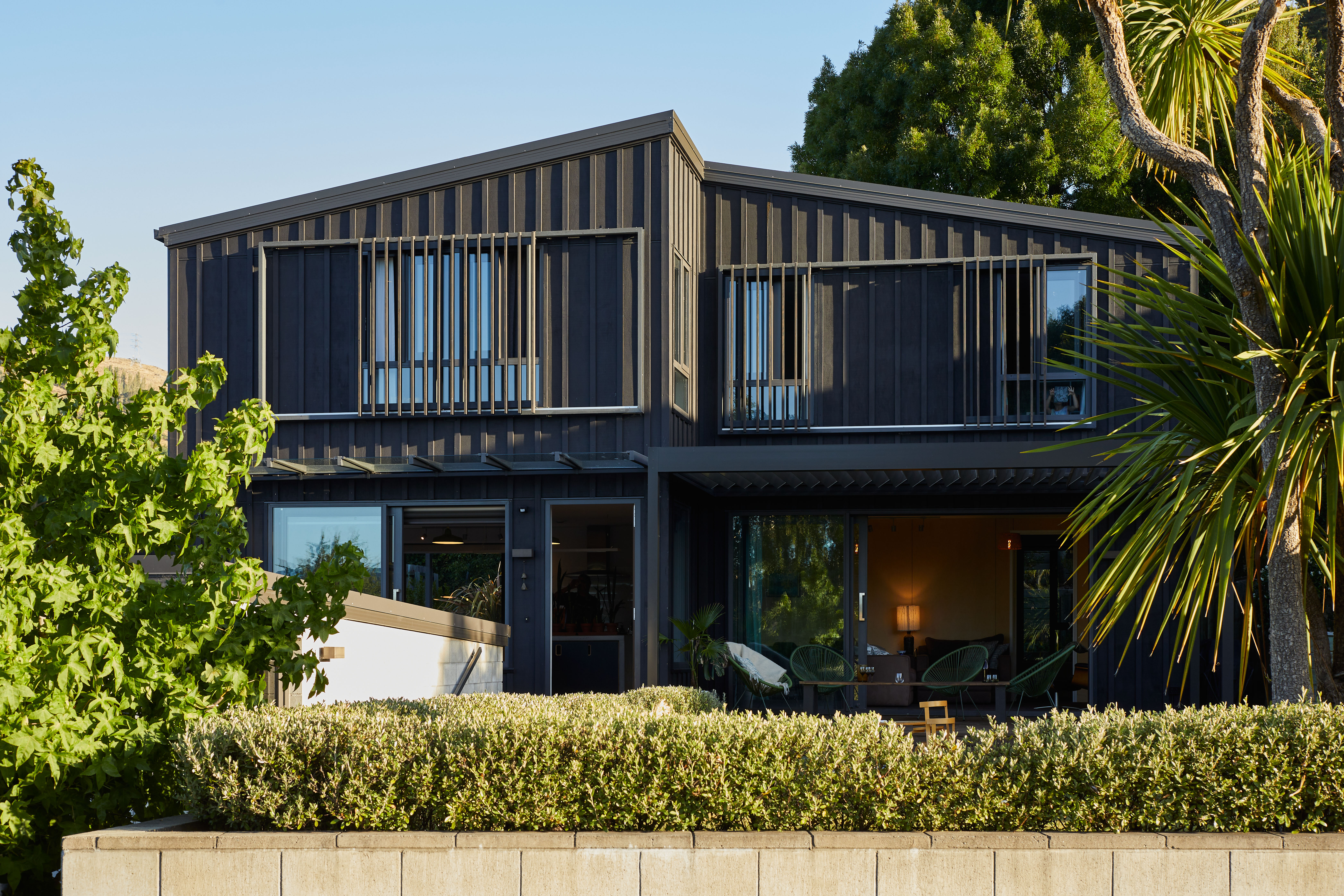For Christchurch designer Karen Manson living in her 7 Homestar rated house has been a test case in sustainability. Designing, building and benchmarking her own super-insulated, eco-friendly family home has demonstrated what can be achieved and how.
Essentials
Owner: Karen Manson & Chris Dopheide.
What: detached, two-storey domestic dwelling; 155 square metres; three bedrooms, two bathrooms plus a study.
Location: a sloped TC3 site backing onto the Port Hills.
Configuration: a north-facing front garden is raised from the street creating outdoor living privacy while the house and front door allow interaction with the local urban neighbourhood.
Where : suburb of Cashmere, Ōtautahi Christchurch.
Occupancy: two adults and two children.
Project certification: 7 Homestar built rating (2023).
Project Snapshot
Architect: Karen Manson & Chris Dopheide, Meta Architects.
Main contractor: Self-built.
Homestar assessor: Noel Guilfoyle, Meta Architects.
Project timeline: section purchased (2012), completion of construction (2015): detailed upgrade and addition of sustainable features (2023).
When Karen Manson returned to Aotearoa after 10 years working in architecture in London, she had a well-articulated agenda her future family home in Ōtautahi.
“Living in London really influenced what we wanted for our own home in Christchurch: over there, we weren’t reliant on cars, we lived in a small but warm and efficient flat and felt connected to the city and urban environment. To achieve this back home, we chose a site in an established neighbourhood well-served by public transport and an easy cycle from the city. Instead of a one-story sprawling floor plan, we built upwards, not outwards. This provided an efficient thermal envelope and a small footprint which allowed for better use of the land for native and edible planting. Lastly, we carefully designed the house so we could interact with our neighbours and oversee the street, while still maintaining privacy, ” she says.
Karen’s experience of poorly insulated residential housing in Aotearoa also shaped her desire for an efficient-sized family dwelling incorporating high performance design and technology.
“Sustainable design has always interested me, from both a comfort and an urban design perspective. Heating a typical New Zealand house is like fighting a losing battle. No matter how much energy you spend on heating, the warmth is lost so quickly due to poor insulation. There’s also a lack of urban density in most cities here, which I see as an opportunity for us to create attractive, cohesive neighbourhoods with better access to public services and spaces.”
“My partner and I both work in architecture and we wanted a simple house which didn’t turn its back on its streetscape - we didn’t want a high fence - we wanted to see and contribute to our urban locality.”
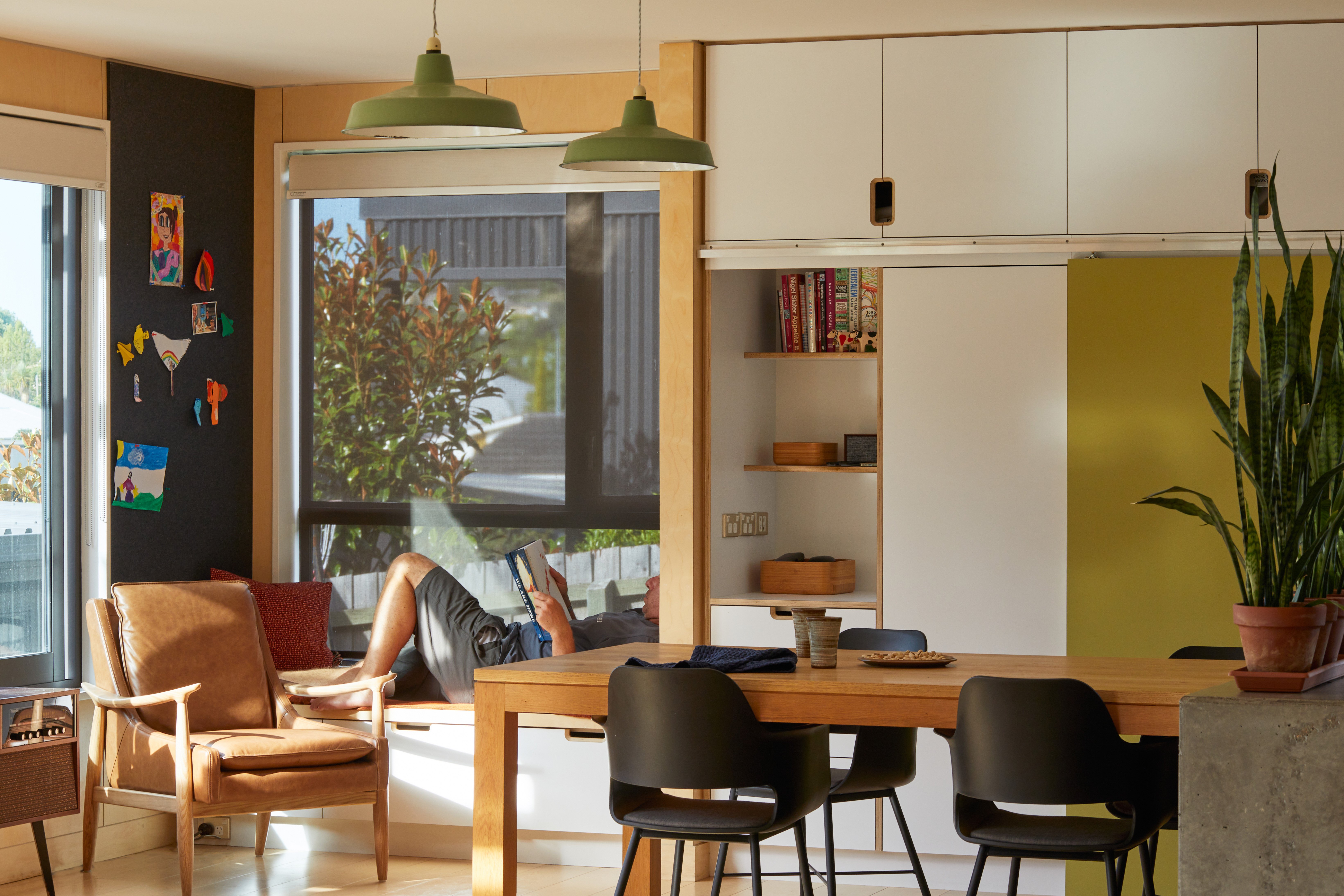
In 2014 the couple bought a section in the established suburb of Cashmere where an existing house had been demolished following the 2012 earthquake.
With excellent transport links to the city and a strong community vibe it ticked the boxes.
Karen’s design trajectory for the compact two-level family house with a raft of high-performance features delivered her European experience to the Cashmere site.
Green highlights included:
- a rigorous assessment of the geometry of the house - ensuring the ratio of floor to external envelope was cohesive with no unnecessary spaces - preventing heat loss and improving circulation
- high performance thermal envelope
- airtightness
- reduction in thermal bridges
- high level insulation (including above the concrete slab of the house) and continuity of insulation across walls and ceilings including around steel portals
- NZ manufactured windows and glazing of the highest thermal quality available at the time
- MHRV
- water efficient fixtures and fittings
High performance construction practices were also central to the Bowenvale House project.
While some outside help was sought, Karen and her partner were ‘the build team’ for all critical elements of the house including insulation and airtightness.
“It was a combination of circumstances. We had a really tight budget and the construction industry eight years ago wasn’t as up to speed with sustainable materials and methodology as it is now. It was also a chance to fully immerse myself in understanding the mechanics of the house.”
From the outset Karen targeted a Homestar rating for the house to verify its performance and environmental impact.
She also wanted to gain hands-on knowledge of the Homestar tool for her (then) newly-established architectural practice in the city.
“My own house was a great opportunity for a lived-experience of sustainability and a chance to engage with Homestar in action.”
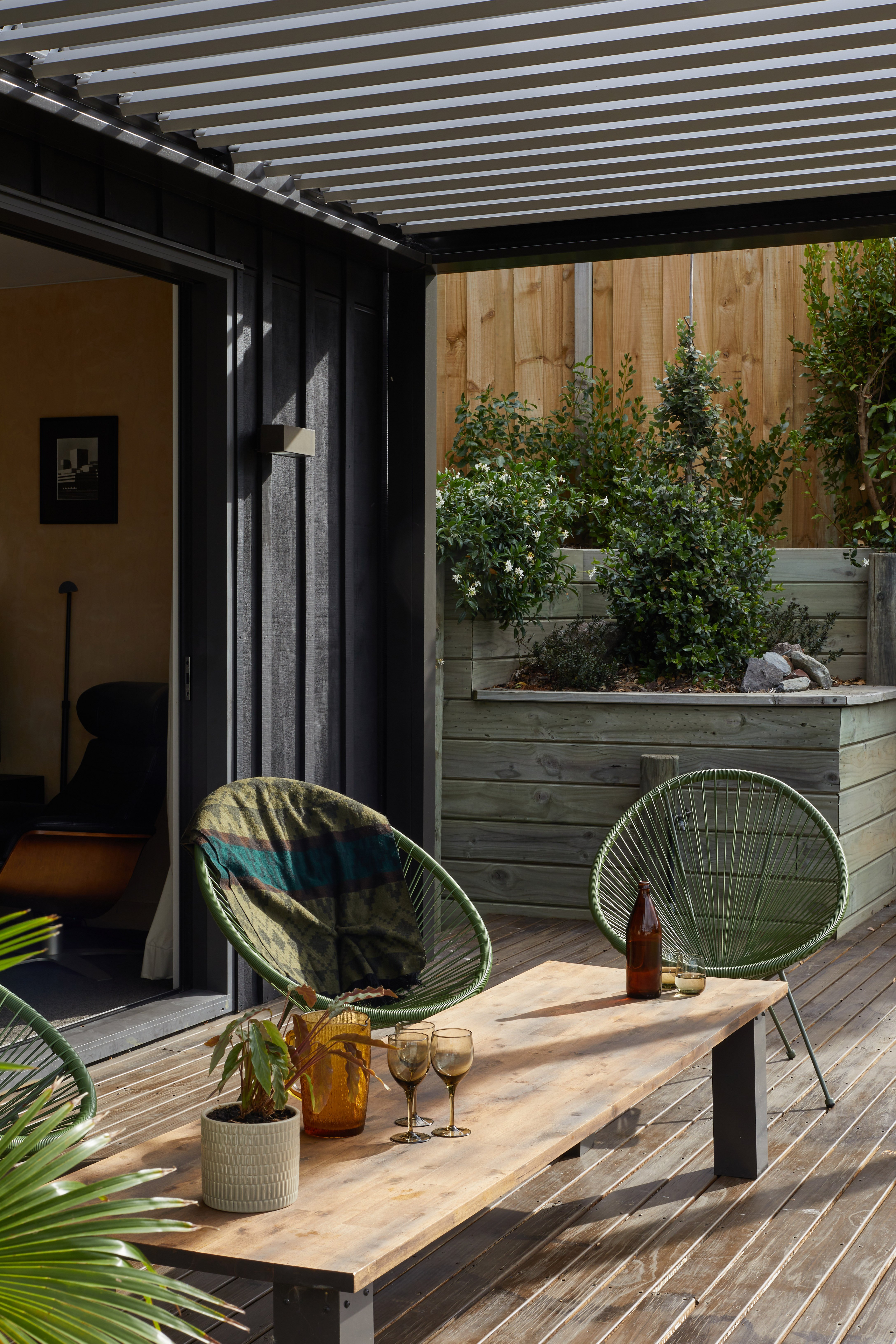
Back in 2015 the Bowenvale House scored a 5 Homestar certification under a now superseded version of Homestar, which didn’t account for high-performance design elements.
When Karen embarked on upgrading the house recently - adding features not completed in 2015 because of the budget - targeting a new Homestar rating with the latest version of the tool, was a key objective.
That recent upgrade has now scored a new 7 Homestar built certification.
“I’m really pleased with this result. In seeking a second Homestar rating I wanted to experience how Homestar now accounts for high-performance design and what an owner has been able to achieve thermally and in terms of airtightness. This learning has informed my own practice of architecture.”
Homestar assessor and Passive House consultant, Noel Guilfoyle, says there are now a number of areas where Homestar and Passive House align.
“Homestar recognizes the quality of certified passive homes which earn higher points under the thermal comfort credit. Homestar V5 uses ECCHO for energy modelling which is based off the passive house PHPP software.”
He says the new 7 Homestar built rating for Bowenvale House reflects its range of additional high performance features including:
- solar PV panels
- heat pump for both heating and cooling
- solar shading with retractable screens to the upstairs north-west facing windows
- solar shading from a pergola with opening louvres to the living room (reduces overheating and can be adjusted to allow more light in during colder months)
- implementation of native planting and food gardens
- implementation of cycle parking
“This house is an excellent example of a simple, smart design with a focus on the building envelope which minimises heat loss. It is close to the city for transportation. It’s a generous, welcoming, effortless house that makes excellent use of its site. It is low-energy and doesn’t cost an arm and a leg to heat,” says Noel.
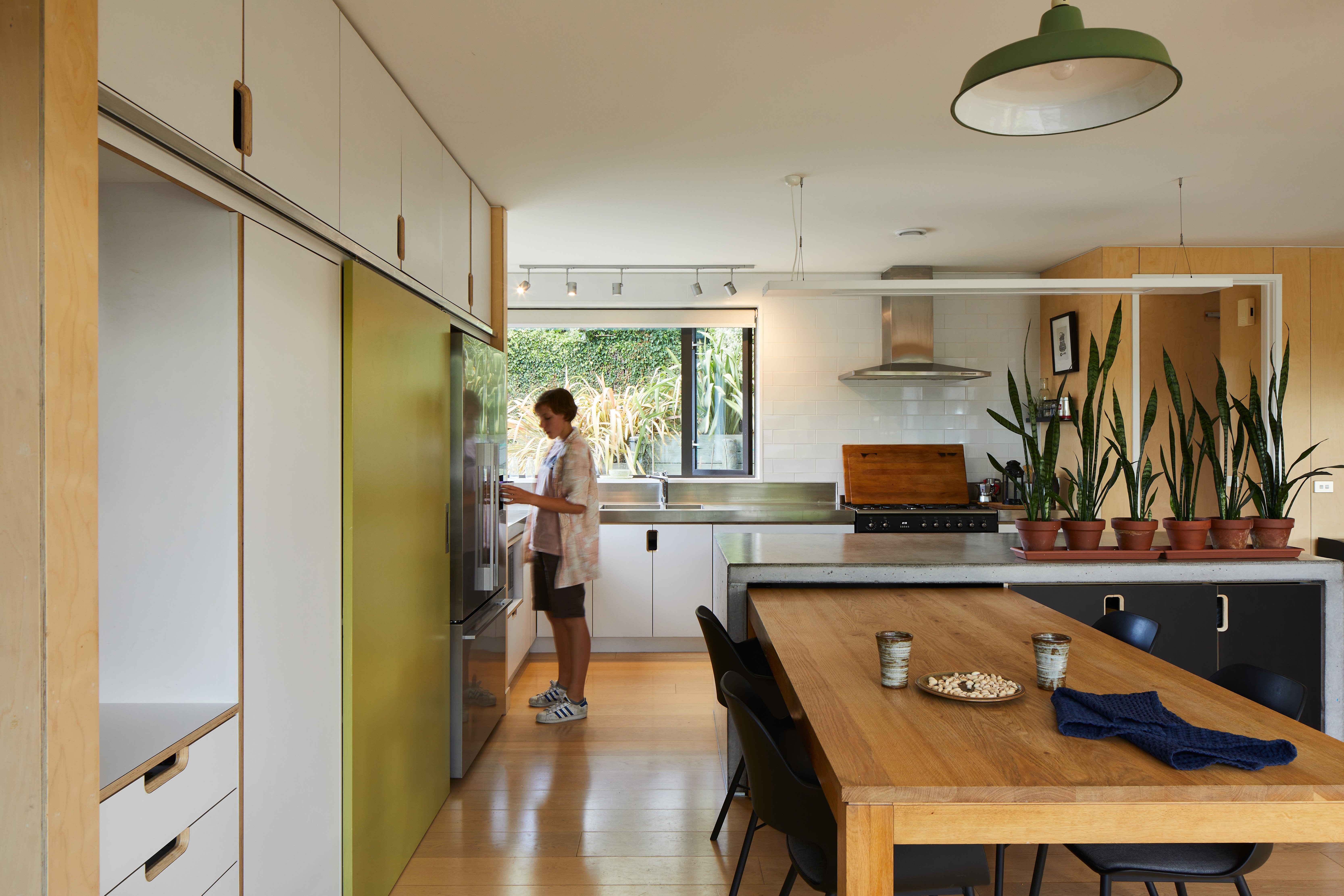
Noel says with any house project a range of features such as solar panels and pergolas can be added further down the track.
“But at the outset it’s important to ensure the building envelope and ventilation system is 100 percent right with good insulation in walls, the roof, floors and around windows - and to install the best windows you can afford. High quality materials are essential for controlling air and vapour layers and a good MVHR system for ventilation. Bowenvale House demonstrates this well.”
Noel says Homestar has the potential to help raise the standard in the delivery of healthier, more energy efficient homes in Aotearoa.
“Homestar is shining a spotlight on the issue of embodied carbon in materials. This may help in pushing industry towards low carbon, less energy intensive materials which is a big positive
Karen says the green elements of her house enhance the way she and her family live on a daily basis.
“The temperature in the house is stable and generally sits around 20 to 25 degrees all year around. The addition of external shading and the heat pump have removed the dips and peaks we had experienced earlier and have made the internal environment consistent.”
“Stale air can make everyone feel so tired but our MRVH system provides us with constant fresh air which makes you feel great. It is so effective that when I’m away from home, I’ll can notice the lack of good quality air in a room.”
Karen says her advice for someone embarking on a Homestar project is to
fully understand what you want to achieve at the outset.
“Complete a preliminary review during design at the very start. Homestar requires you to provide evidence of the selections you make and it can become quite difficult to collate retrospectively. And take advice on product selection - people can chose a product they think is ‘green’ but it may not actually fit the Homestar criteria.”
She says Homestar should be an aspiration as well as a benchmark.
“Being green isn’t just about the individual products and components that go into a building. It comes down to having a vision for the natural and built environment. This is reflected in the Homestar rating tool, which awards points for density, amenities, native planting and sustainable transport.”
